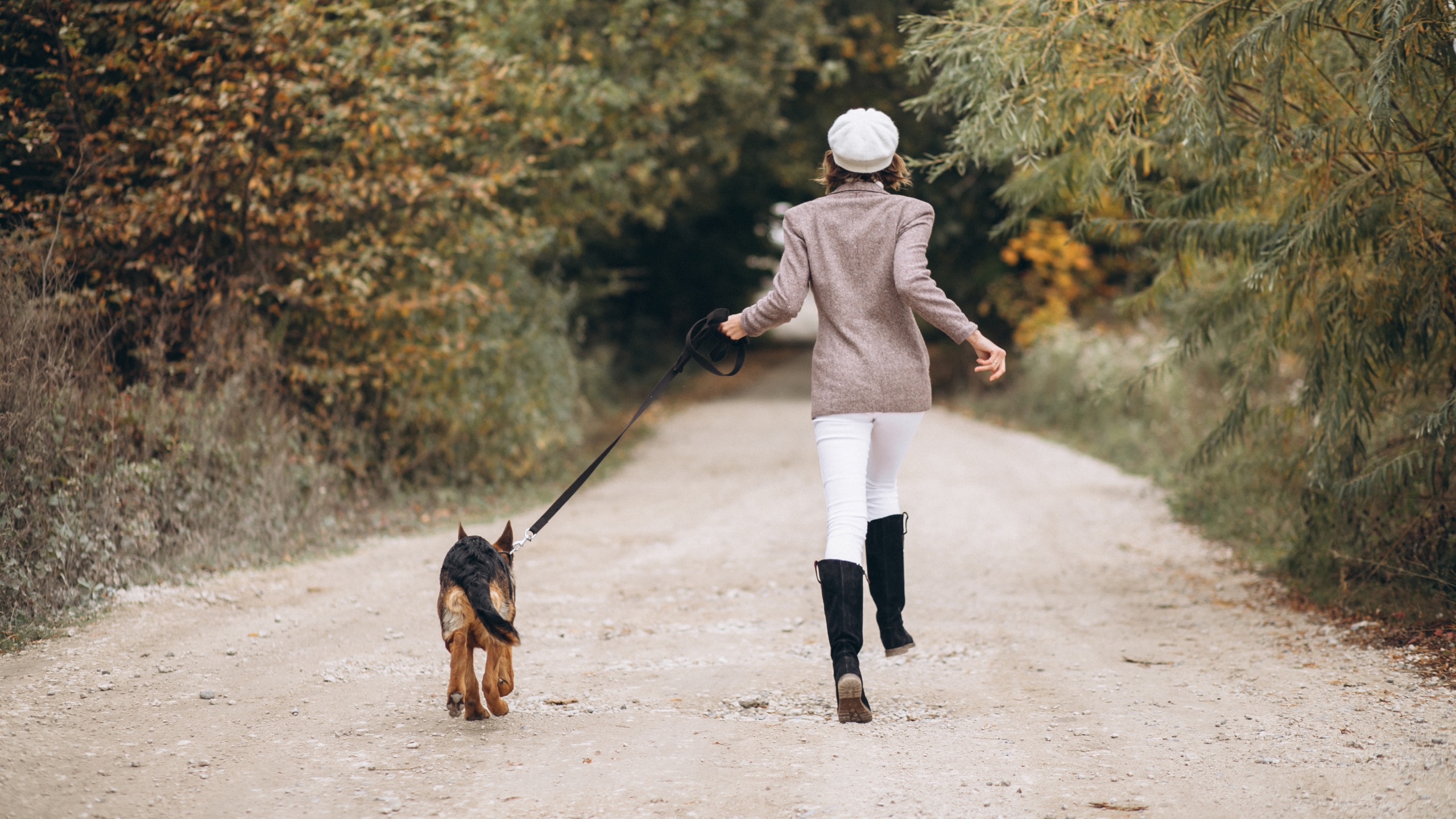
Benefits of a Consistent Dog Walking Routine
Regular walks are vital for a dog’s physical health, helping to maintain a healthy weight, improve cardiovascular fitness, and promote healthy digestion. Additionally, they provide mental stimulation, which is crucial for preventing boredom and the behavioral issues that can arise from it, such as excessive barking or chewing. By creating a daily walking routine, you give your dog the stability and enrichment they need to stay happy and healthy throughout their lives.

1. Set a Regular Dog Walking Routine
First and foremost, determine a set time each day for your walks. Whether it’s early morning or in the evening, sticking to a schedule helps your dog know what to expect, which can significantly reduce anxiety and unwanted behaviors. Consistency is key, as it creates a sense of security for your dog, knowing when their daily adventure will occur. Over time, they will look forward to this routine as an important part of their day.
2. Choose the Right Length and Pace for Your Dog Walking Routine
The length and pace of your walks should match your dog’s age, breed, and fitness level. For instance, a young, energetic puppy may require longer and more vigorous walks, while an older dog may prefer shorter, gentler strolls. Start with shorter walks and gradually increase the distance based on your dog’s energy levels and health. This way, you ensure a pace that is comfortable yet effective for your furry friend. Remember, the goal is to keep them physically active without overexertion.
3. Bring the Essentials for Your Dog Walking Routine
To ensure a safe and enjoyable walk, always bring along essentials such as a sturdy leash, water, waste bags, and treats. Having these items on hand not only keeps your walk convenient but also prepares you for any situation that may arise. For example, waste bags are necessary for cleaning up after your pet, while water is crucial during hot days to keep your dog hydrated. Treats can be used for rewarding good behavior or encouraging your dog to follow commands during training sessions.
4. Mix Up the Route for Mental Stimulation
While routines are comforting for dogs, introducing a change of scenery can be highly stimulating mentally. Explore different routes or parks to keep your dog engaged and prevent boredom from setting in. New smells, sights, and sounds can enhance their walking experience, making each outing exciting and enriching for both you and your dog. For instance, consider visiting a nearby trail or a dog-friendly beach to provide new experiences that can benefit their mental health.
5. Incorporate Training During Your Dog Walking Routine
Walks are great opportunities for reinforcing important commands such as “heel,” “sit,” or “leave it.” This training keeps your dog focused, helps with impulse control, and improves their overall behavior both on and off the leash. You can easily incorporate training into your walks by asking your dog to perform commands during your outing. Reward them with treats or praise for successful execution to make the training process enjoyable and effective.
6. Observe Your Dog’s Behavior During the Walking Routine
Pay close attention to your dog’s behavior and physical signs, such as fatigue or discomfort. Knowing when to adjust the routine is crucial to ensuring that your dog remains happy and healthy during every walk. For instance, if your dog seems overly tired or hesitant to continue, it may be time to shorten the walk or take a break. Additionally, be mindful of environmental factors, such as weather conditions and pavement temperatures, which can affect your dog’s comfort during walks.
7. Gradually Increase Walk Intensity
As your dog becomes more accustomed to the routine, consider gradually increasing the distance or pace to match their growing stamina. For energetic dogs, adding activities like fetch or running can help them release more energy, creating a more fulfilling experience for both of you. Remember to balance exercise with adequate rest and hydration to keep your dog safe and healthy throughout your walking routine.
Conclusion
Creating a dog walking routine is not just about keeping your pet physically active; it’s also an excellent way to strengthen your bond. By following these steps, you can establish a routine that benefits both you and your furry friend, ensuring enjoyable walks that enhance their overall quality of life. With patience, consistency, and a bit of creativity, your daily dog walks can become a cherished activity that fosters a deep connection between you and your canine companion. Happy walking!
